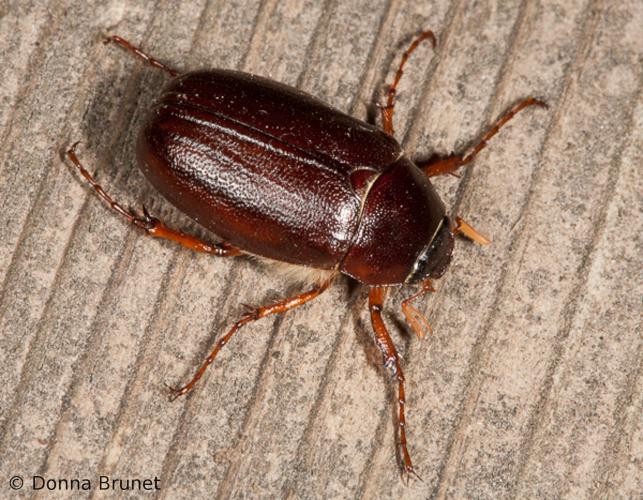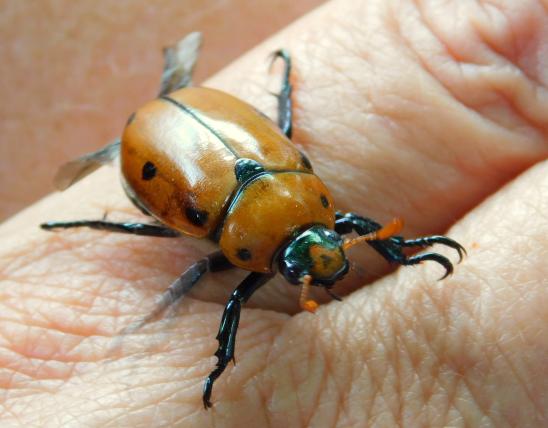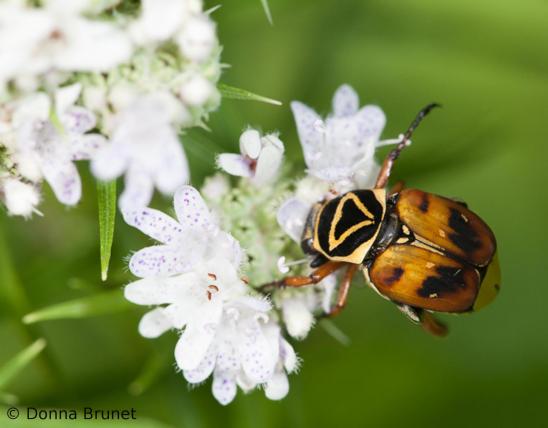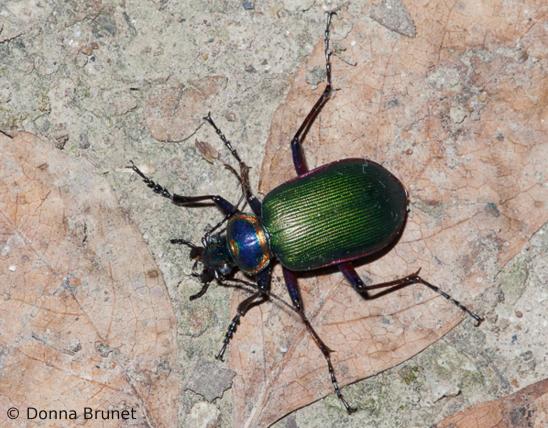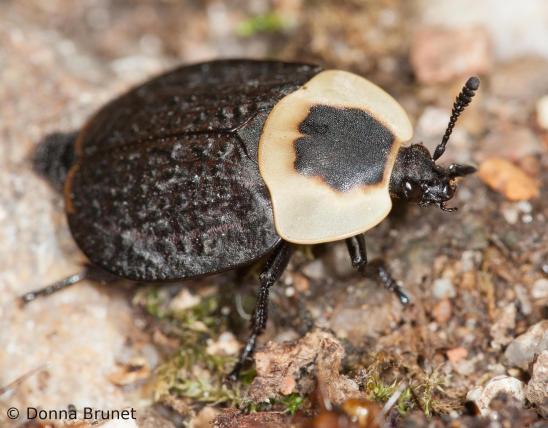
May beetles, or June bugs, are usually brown, rusty, or black, without patterns such as spots or stripes, and rather hairy beneath. They are nocturnal and are attracted to lights at night. They walk and fly clumsily.
May beetles belong to a large family of beetles called scarabs. As with other scarabs, they are oval, stout, and have clubbed antennae with segments that can press tightly together or can be fanned open like a feather.
The larvae of most scarab beetles are whitish, C-shaped grubs that live underground. The heads are often brownish, and they have three pairs of legs. They are often called “white grubs.”
Length: ½–1 inch (adults); ¾–2 inches (larvae) (varies with species).
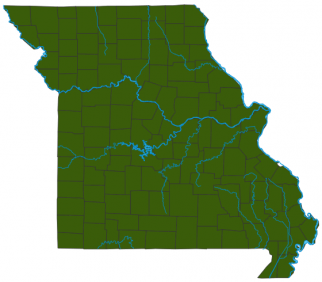
Statewide.
Habitat and Conservation
It wouldn’t be a late-spring Missouri evening without May beetles flying clumsily around porch lights, crash-landing, lying on their backs and waving their legs helplessly. Though they chew plants, they cannot hurt people.
The white larvae are well-known to anyone who digs in the soil.
Because May beetles can damage crops, control measures are often taken, but rotating crops, strategically timed plowing, and nature’s own controls can keep heavy infestations from being an annual event.
Food
Adult May beetles eat plant leaves (the genus name, Phyllophaga, means “leaf eater”) and flowers. Larval May beetles (grubs) eat roots and decaying plant material in the soil. When they are numerous, then can damage lawns, gardens, and crops.
Status
Common.
There are more than 400 species of May beetles (Phyllophaga spp.) in North America north of Mexico, including about 86 in eastern North America. The many different species are difficult to distinguish.
Entomologists usually avoid calling them “June bugs” because “bug,” in its technical sense, refers to a completely different group of insects that are not beetles. Common names can be confusing in many ways. People in some parts of America use the term “June bug” to refer to mayflies, since those insects in certain regions are much more abundant in June.
Life Cycle
After mating, females dig a few inches into the soil to deposit their eggs, often near trees. The grubs live underground for 1–4 years (depending on species), feeding on plant roots and descending much lower into the soil to overwinter. When fully grown, in late spring the larvae pupate for a few weeks, each within a small cavity in the soil. They complete pupation but stay underground for another year until the following spring, when they crawl to the surface to fly, mate, and lay eggs.
Human Connections
During years and in places where these beetles are numerous, their feeding can cause serious damage to lawns and crops. Meanwhile, the grubs are famous as a free, live fishing bait, being one of the few types plentiful in spring.
Ecosystem Connections
Many animals root out the grubs and eat them, including skunks, moles, and birds such as crows and grackles. Many other animals, including birds, bats, and frogs, eat the adults. Several types of flies and wasps are parasitic on the adults and larvae, laying eggs that later hatch and devour the host. One example are the scoliid wasps.
